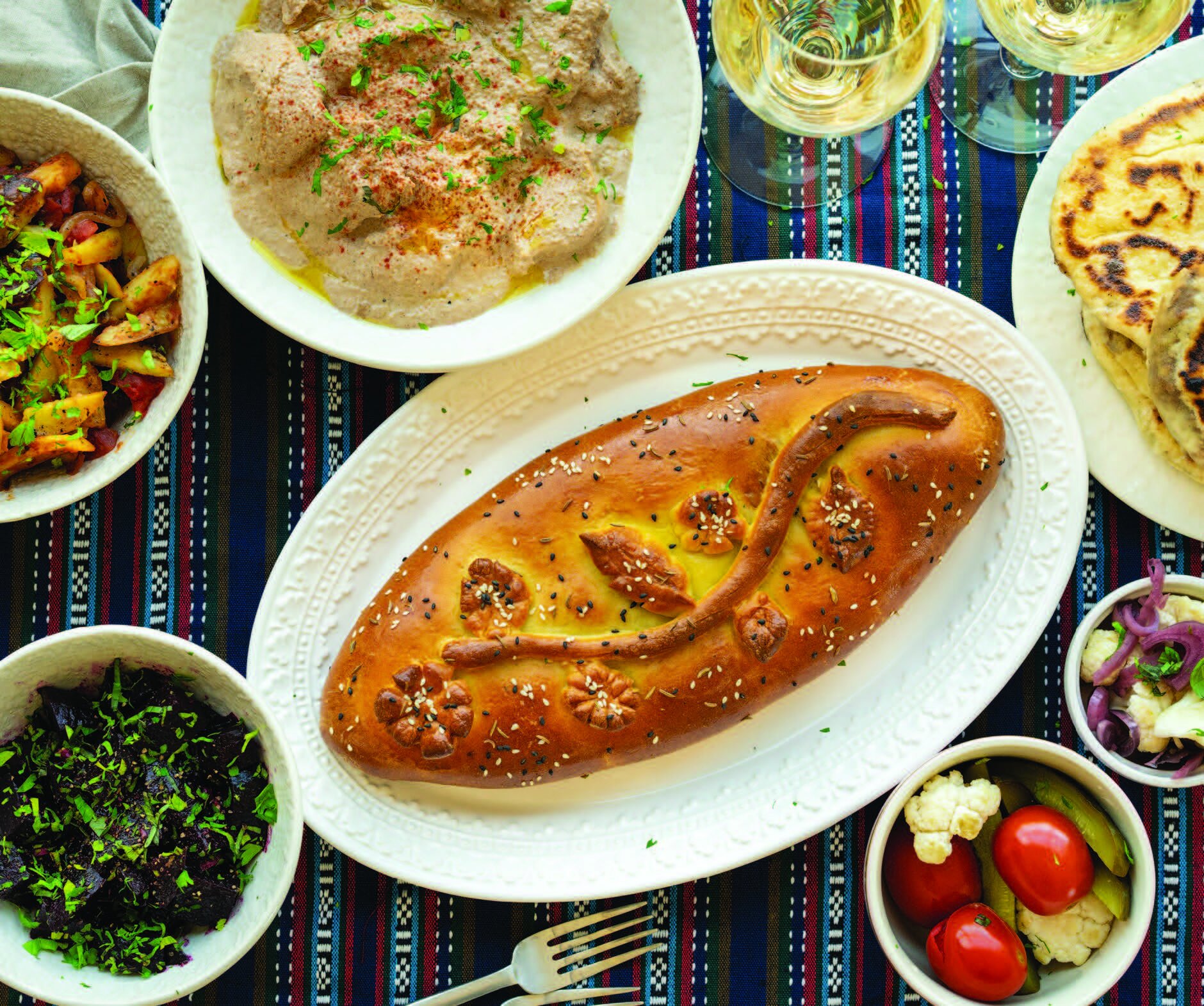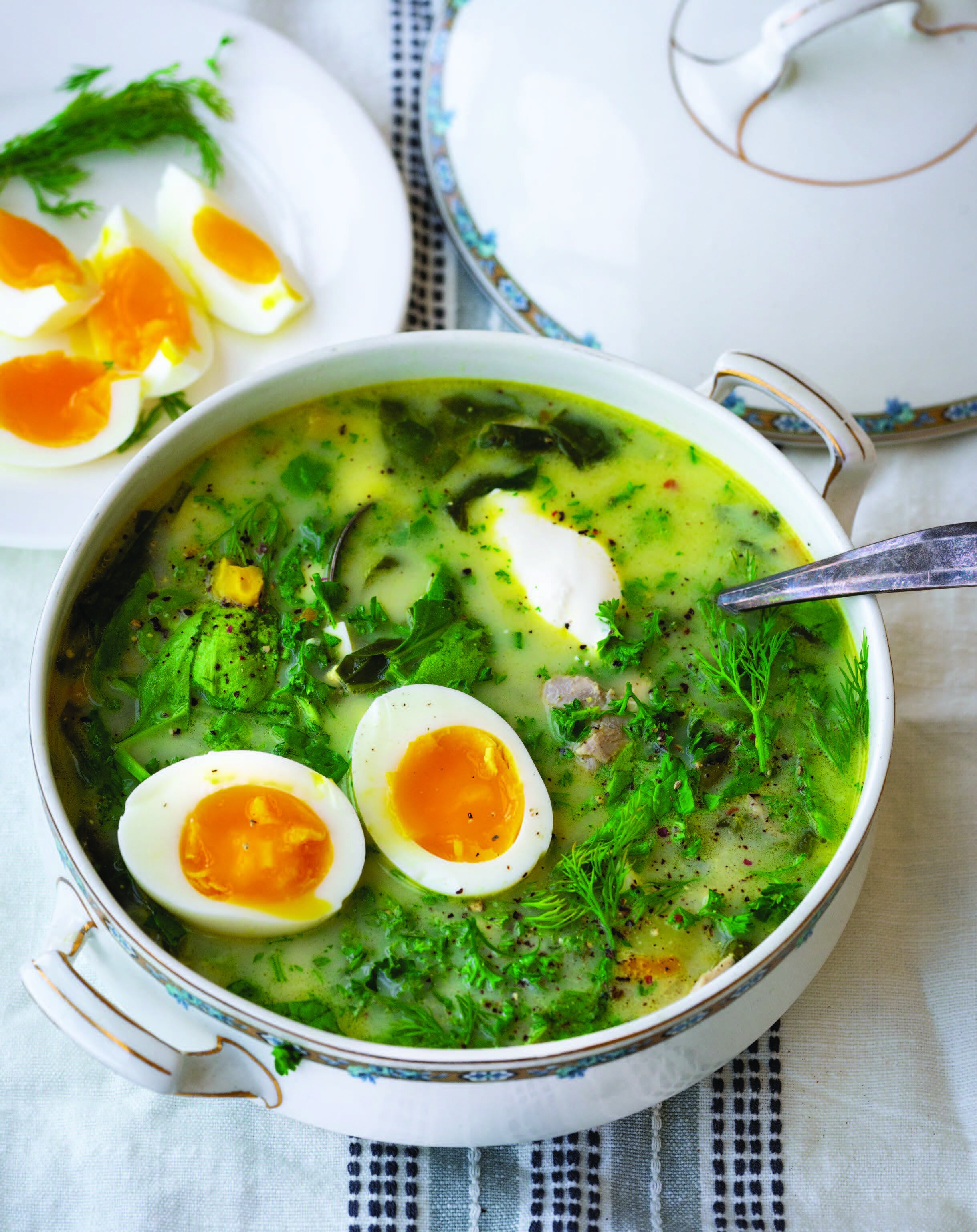Budmo!: An Interview with Anna Voloshyna
Photo by Anna Voloshyna
Growing up in Ukraine, Anna Voloshyna spent a lot of time around food. She remembers watching her mother work her magic in the kitchen, smelling her grandma’s succulent roast duck in the oven, arranging homemade dumplings on plates for guests, and sitting down to an abundant table with friends and family, talking, laughing, and toasting over heaping platters and glasses of chilled vodka. When she headed to university in Kiev, Anna discovered that she had a talent for cooking herself and, when she moved with her husband to San Francisco, she started hosting dinners of her own. Over the past five years, Anna has hosted hundreds of pop-up dinners and cooking classes, sharing the food of her beloved homeland with legions of delighted diners and cooks.
This fall, Anna will share her stories and recipes with cooks worldwide, in Budmo! Filled with recipes for Ukrainian dishes bursting with bright flavors, this heartfelt cookbook invites readers to bring the same spirit of joy and celebration that Anna shares at her pop-ups and classes into their own homes. We first began working with Anna to produce Budmo! several years ago; over these past months, the book has taken on new poignance.
We sat down with Anna to talk about picking sweet cherries, khachapuri madness, and the lessons she hopes readers will take from Budmo! into their own kitchens and lives.
Photo by Maria Boguslav
How did you first fall in love with food?
AV: Food is a huge part of Ukrainian life. When I lived with my mom and grandma, they were like, “Okay, we will cook, you will eat. Don’t do anything!” But I was always there, watching and eating. Watching them cook for our family or guests taught me how to host people. The rule of Ukrainian hospitality is, if a guest is coming, the table should be abundant. It should be full of food — there’s always at least one centerpiece dish, at least two appetizers, some sort of pickles, vodka, and you need zakuska, a small bite you can have after your shot of vodka. People need to feel welcomed and fulfilled.
Then I got into our biggest university and moved to Kiev. I found a friend in the dorm, and he and I started cooking together. First, I made Ukrainian crêpes, with tvorog, soft farmer’s cheese. It’s sweetened with sugar and vanilla extract and soaked, plumped raisins. We started making elaborate Ukrainian dishes, like dumplings and borscht and fish soup. And then everybody was like, “Oh, she’s a cook!”
Photo by Anna Voloshyna
What inspired you to write Budmo!?
AV: After I met my husband, Alex, we moved to the United States. When I came here, I was overwhelmed with all sorts of different cuisines I’ve never had in my life. For some time, I was like, “My food so boring. This food is interesting.” After I [was] saturated, I’m thinking that my food, Ukrainian food, is not only delicious, it has deep personal meaning, and it brings so many memories. I started feeling that it is the same for many other people, and I decided, ‘Okay, if I feel this way, and I want to share, that would be awesome.’ And I started hearing more and more of, “Oh, thank you so much for sharing this. It’s exactly like my grandma did.” I felt like, if I can bring that sort of comfort to people and nostalgia, that would be amazing.
And I really wanted people who are not accustomed to this type of food to get adventurous and see that this is delicious. So yeah, I wanted to share [Ukrainian food] with Americans, but mostly, I wanted to make it for people who miss this sort of food here.
Why did you decide to call the book Budmo!?
AV: “Budmo” is one of my favorite words in Ukrainian, because it means so much. It’s the equivalent of “cheers” in English, but “budmo” is more meaningful. It means “let us be,” like, “let us be healthy,” “let us be together,” “Let us celebrate.” So that was the word that, for me, embodied Ukrainian hospitality, and that’s what I wanted to show in my book.
Where in Ukraine are you from?
AV: The name of my town is Snihurivka. It’s in the Southern part. It’s a warm region, and we had so many orchards. We had five cherry trees, and one huge sweet-cherry tree, and I would have to go up [in] the tree and pick the cherries and then, using a safety pin, take the pits out, one by one. It was so tiresome, but after, my mom would make sour cherry dumplings or sour cherry piroshki. Fried piroshki are amazing with cherries, literally amazing.
Photo by Anna Voloshyna
Do you have any favorite food memories, from growing up?
AV: For Easter, you usually go to church the night before. You wait for hours, in the middle of the night, until the priest goes and starts splashing holy water onto everyone. It’s a ceremony, and it’s a long process.
Then, early morning, you unpack all of the good stuff you brought with you, and have breakfast with your family. If it’s a late Easter and the weather is warm, we’ll go outside and have a picnic near the river. We start the ceremony of egg fights, and whoever has the strongest egg is the winner. My mom would bake or order paska, sweet Easter bread, and she would make bulochki, a yeasted pastry stuffed with farmer’s cheese or poppy seeds. And always homemade kielbasa and some sort of meat, like roasted pork belly. And we would eat first spring veggies, like spring onions and cucumbers, and it would be an amazing celebration, after spending the night on the road and around the church. You’re happy, and it’s so cool.
What defines Ukrainian food? What sets it apart?
AV: It’s pretty similar to [food from] a lot of other European countries, like Poland and Hungary. But Ukrainian cuisine is very hearty, I would say. It’s not a lot of spices. It’s mostly about ingredients and how you treat them, and it’s all soaked in love and labor, because it’s not super hard to make, it just takes time. But that means if you’re putting in the effort, you want to nurture and nourish the people you’re cooking for. So it’s all about comfort and bringing people together. That’s the core of Ukrainian cooking.
Photo by Anna Voloshyna
What are the essential ingredients of Ukrainian food?
AV: Meat-wise, it’s pork and poultry. We are not big on eating beef, because we use cattle, mostly, for milk, because we like everything with milk and sour cream and dairy and butter. But fun fact, Ukrainians were using hemp milk way before it was cool! About 300 years ago, we used more hemp milk than cow’s milk, and we even used hemp oil for cooking.
One of the key ingredients was sunflower oil. We used it for everything. We have two types: One is refined, which is good for frying and deep-frying. It smells wonderful and doesn’t smoke. And for finishing dishes and adding more flavor, we use unrefined sunflower oil, which is a deep golden color. It’s as intense as toasted sesame oil. And of course, garlic and dill are two of our main flavoring agents for everything.
And definitely a lot of veggies. It’s always seasonal, but cabbage and potato, we eat and cook with year-round. In almost every dish, we have potato. And in almost every soup, we have cabbage.
I know that Budmo includes some dishes that have roots in other parts of Europe as well, like Georgia and Poland. Do you have a favorite dish in the book that originated outside Ukraine?
AV: Khachapuri, for sure. The reason I included it is because people love khachapuri in Ukraine. You know how, every five years, we have a new hot cuisine, and everybody’s cooking that type of food and buzzing about it? We had that with Georgian food in Ukraine. At some point, it became so trendy that we had more Georgian restaurants in Ukraine than Ukrainian restaurants. It was, like, khachapuri madness!
Photo by Anna Voloshyna
Budmo! has lots of recipes for different starters, salads, spreads, soups, kashas, main dishes, and desserts. Which recipe would you recommend for someone who’s pretty new in the kitchen — or new to Ukrainian cooking?
AV: Start with the veggie borscht. You just need to chop veggies, and it doesn’t matter if they are perfectly chopped or not. Then just throw everything together, cook it, and it’s done. And if you’re super lazy, or scared of knives, you can go buy pre-chopped stuff from Trader Joe’s, throw it into the pot, and in an hour, you will have a hearty, authentic meal. It’s so simple, but it looks impressive, because making borscht sounds so elaborate.
And how about for cooks who want to make a real show-stopping recipe for guests?
AV: That’ll be Grandma’s Roasted Duck. To this day, it’s my favorite dish. It’s not that hard to make, but it’s definitely a show-stopper. Especially if you’re inviting people from Ukraine, they would appreciate the duck so much. It’s not an everyday meat, so duck equals celebration.
Photo by Maria Boguslav
What do you hope that people will take away from your book?
AV: When I started writing this book, before the war in Ukraine, I thought, ‘I want to show people how festive our food is, and I want to show them, like, ‘Go visit Ukraine. It’s such a nice place. It’s amazing.’
Right now, I want to show them, ‘This is why we are fighting right now, because we don’t want to lose this. If we lose this war, we will lose this culture. This is why we are fighting, to preserve this, to keep celebrating, to keep developing our country and our culinary culture and our regular culture, everything. We just want to be our own people. We want to be free.’ I want to show people that my country is worth saving and worth fighting for.
Photo by Anna Voloshyna
To learn how to make veggie borscht, sour cherry piroshki, and, yes, even khachapuri, in your own kitchen, check out Budmo!, available for preorder from Rizzoli.








